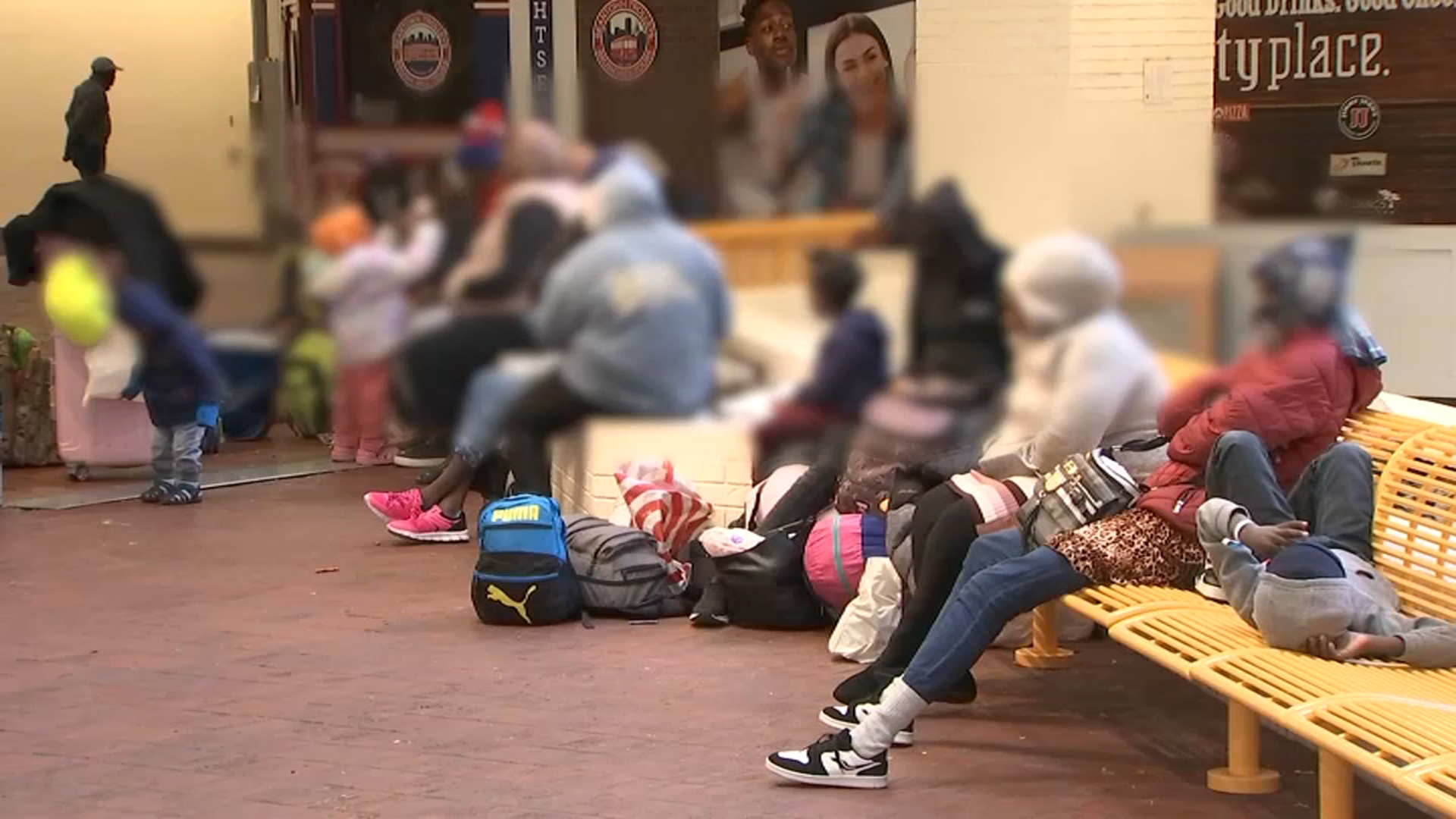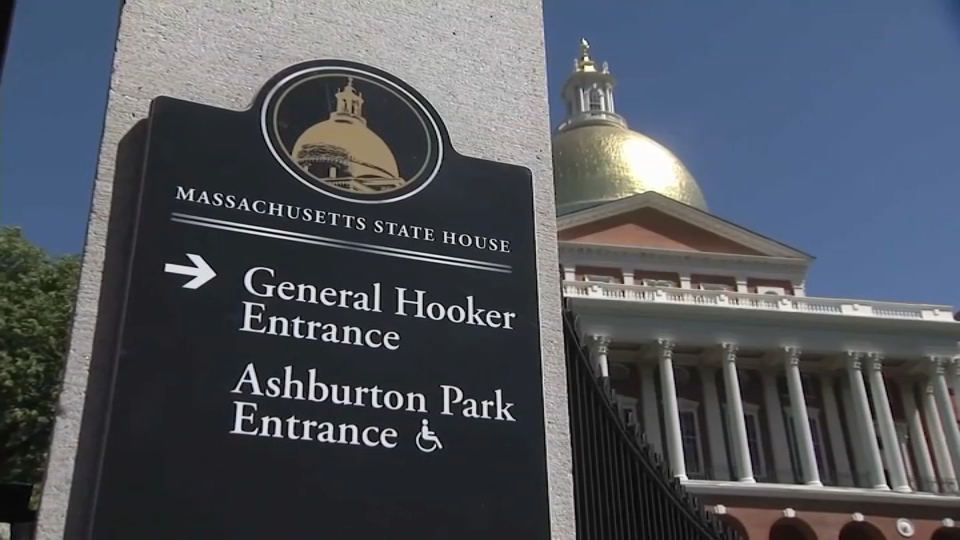
Massachusetts' emergency shelter costs will approach $1 billion annually this fiscal year and next fiscal year, according to the Healey administration, which plans to drain a $700 million state escrow account to cover a portion of the unanticipated expenses.
The Legislature and Gov. Maura Healey in July appropriated just $325 million for emergency shelters in the fiscal 2024 budget, an amount that is not coming close to the funding needed to house homeless families from Massachusetts and new arrivals from other countries.
A new report from the Healey administration offers the fullest look to date at the costs of a crisis that caused Healey to declare a state of emergency in August. The surging costs are rolling in just as state tax revenue growth is slowing and creating budgeting storm clouds.
Beacon Hill Democrats are just coming off a heated debate over steering $250 million more into the shelter system, and the new report suggests that more than $350 million in additional funds may need to be authorized to keep the system funded through June and to "avoid imminent run-out dates for key programs."
Former Gov. Charlie Baker created a "transitional escrow fund" in October 2021, when he signed a supplemental budget that stashed $1.5 billion in surplus revenue into the fund. Lawmakers this year sought to draw $205 million from the fund to cover fiscal 2024 spending increases, but Healy vetoed the maneuver.
More on Massachusetts' emergency shelters
Administration and Finance Secretary Matthew Gorzkowicz and Housing Secretary Ed Augustus, who authored the report, wrote that most families are living in shelters for over a year, so the state will need to take a two-year approach to funding the system.
"That means that even with the system's capacity level established, deficiency needs for EA are a two fiscal year problem, requiring a solution that spans FY24 and FY25," they wrote. "Fundamentally, the crisis of family homelessness requires a multi-faceted set of policies including shelter, supportive services, education and workforce training, and affordable housing programs that enable families to leave shelter and ultimately move on to stable housing."
The policies that the Cabinet secretaries referred to could come into focus next month when Healey offers her fiscal 2025 budget plan.
Gorzkowicz and Augustus said that the administration's short-term plan, which will be reflected in an upcoming supplemental budget bill, would tap the $700 million remaining in the Transitional Escrow Fund to cover funding deficiencies associated with $932 million in projected emergency shelter spending in fiscal 2024, and a projected $915 million in fiscal 2025 emergency shelter expenses.
Packed shelters and hotels have become associated with what is often called the "migrant crisis," and while new arrivals seeking asylum and fleeing humanitarian crises in other countries have fueled the increase in those seeking shelter, the report shows new immigrants make up less than half of the number of people in the system.
As of Dec. 12, 3,516 families in EA entered as migrants, refugees or asylum seekers. There were a total of 7,531 families enrolled in the system on that day, according to News Service tracking of Executive Office of Housing and Livable Communities data.
In order to get a spot in shelter, families need to have entered the country legally under federal immigration laws. Most of the immigrants are coming into Massachusetts from Central and South America and have either applied for asylum, been granted temporary protected status or are otherwise lawfully present.
Healey has repeatedly said her administration is focused on getting work authorizations for these individuals, to help migrants who are eager to earn money to leave shelter and support their families financially.
The Healey administration and the U.S. Department of Homeland Security hosted clinics in November to help immigrants work through the authorization process, and said 2,910 individuals received help.
Sign up for our Breaking newsletter to get the most urgent news stories in your inbox.
As of Dec. 12, 813 migrants, refugees and asylum seekers in the EA system were authorized to work in the U.S., according to the report.
Despite a state right-to-shelter law, Healey unilaterally capped the shelter system at 7,500 families this fall. A waitlist of those standing by has grown to over 200 families.
The administration plans to file a supplemental budget "in the coming weeks" to create an "Emergency Housing and Community Trust Fund" to address EA funding deficiencies, the report says.
"Thankfully, the state has the resources available in Transitional Escrow to put a plan in place that will address FY24 and much of FY25 without requiring offsetting budget cuts to other programs to meet the spending requirements of the family shelter crisis. As of December 2023, the estimated uncommitted balance of the Transitional Escrow Fund (TEF) is approximately $700 million," it says. A footnote later notes that estimate is subject to change.
Gorzkowicz and Augustus proposed using the remaining balance of the escrow fund to directly pay for EA costs and related services.
Under their plan, $150 million from the Emergency Housing and Community Trust Fund would support housing production and preservation. After that is spent, money from the fund would go towards backfilling EA deficiencies from FY24 and FY25. After EA costs for FY25 have been covered, any remaining balance from the fund would be used for additional housing production and preservation.
When combined with $260 million in supplemental funding appropriated for the EA system this month, the administration predicts its plan would cover the projected fiscal 2024 deficiency and more than half of expected fiscal 2025 costs, with the 7,500-family cap in place.
There would still be about $260 million in unmet fiscal 2025 costs after the escrow fund is depleted, according to the data presented by the administration.
The huge amount of estimated spending comes at a time when revenue flowing into state coffers is slowing down, and lawmakers and Healey may have to consider what that means for fiscal 2025 spending.
"Revenues are not what they have been the last few years. We recognize that. We've seen a dip," Healey said last week.
Senate budget chief Michael Rodrigues this month said the state is "at a precarious crossroads," and projected that "there are storm clouds gathering on the horizon" in fiscal 2025.
The report also includes an update, broken down by municipality, of the total families currently in shelters, hotels or motels.
Boston is hosting the most families, with 1,308 families living in shelters in the city. Worcester has the next highest number of sheltered families, 303, followed by Springfield at 282 and Lynn at 280.
An account of supplemental school district costs as schools take in children from sheltered families shows a huge increase in spending between March and the end of the 2022-2023 school year. Between Oct. 1 and March 1 last school year, districts spent $877,032 in extra funds accommodating new students from the shelter system. In just over two months from March 2 through the end of the school year in June, districts spent over $2.1 million.
The report, shared with the News Service on Monday night, was the first of many. Healey's administration will have to deliver a similar update to lawmakers every two weeks, which will include information on current shelter numbers and spending.
Lawmakers tacked the reporting requirement onto a supplemental budget earlier this month that included a $250 million infusion in shelter funds that Healey had asked for in September.




